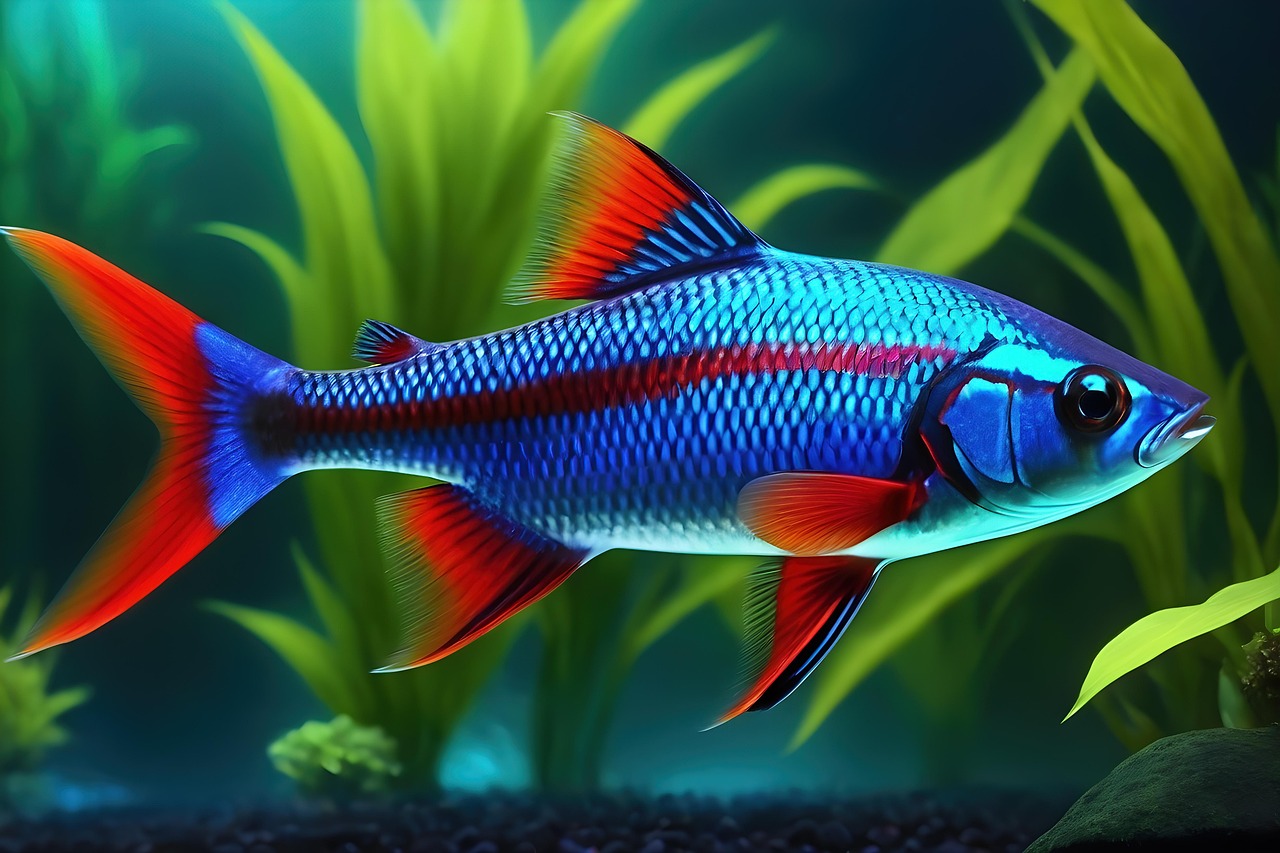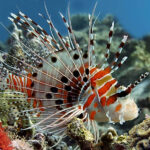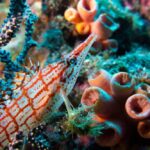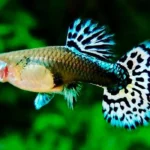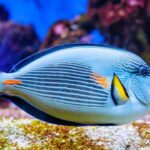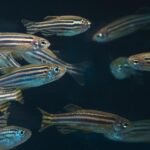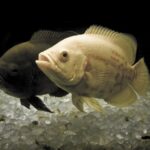The Spark in the Tank
Neon Tetras Picture entering a softly lit room and adjusting to the darkness until you’re aware of a shimmer of shimmering blue iridescence, throbbing red pulsations, and zooming like live light. It’s not a dream or some fancy marine decoration; it’s the unerringly luminescent light of neon tetras—little fish that pack a visual punch.
But these small fish have more to them than one can see. In this deep dive into the glowing world of neon tetras, we’ll uncover their origins, biology, care requirements, tank compatibility, breeding behaviour, health needs, and cultural legacy.

Origins: From South America With Light
The blackwater and clearwater streams of the Amazon Basin, particularly in parts of Brazil, Colombia, and Peru, are home to neon tetras (Paracheirodon innesi). A dim, tea-colored environment is created by tannins from decaying vegetation coloring these waters. In such dark, shadowy rivers, the neon blue stripe that runs the length of the neon tetra’s body isn’t just beautiful—it’s a biological marvel. Even in murky water, it helps the fish stay visible to its school.
Discovered in the 1930s
It was in the early 20th century that neon tetras took the aquarium by storm. It was in the 1930s that they were introduced into Europe and the United States for the first time, and it was love at first sight. Dr. William T. They were introduced to the West by Innes, a prominent aquarist. Their scientific name—Paracheirodon innesi—is dedicated to him.
Anatomy of a Glow: What Makes Neon Tetras Shine?
What makes the neon tetra shine so famously? The answer is in its extraordinary iridophores—specialised cells that reflect light. They produce the dramatic iridescent blue stripe and the vibrant red band that extends from the belly up to the tail. With the proper lighting, the colors glow like LEDS.
More Than Just Pretty
Other than their dazzle, Neon Tetras are hydrodynamic and efficient swimmers. Their streamlined body shape allows them to dart through the water with great ease, and their schooling behavior makes them a joy to watch in schools.
And interestingly enough, the color intensity of a Neon Tetra can actually change. In bright sunlight or under stress or sleep, the vibrant colors can look slightly washed out. Don’t worry—it’s normal physiology for them.
Setting the Stage: Ideal Tank Conditions
Developing the ideal setting for neon tetras isn’t difficult, but it does require consideration. Neon Tetras are robust fish, but they flourish in conditions that approximate their native Amazonian environment.
Tank Size & Setup
Minimum tank size: 10 gallons for a small school.
Recommended group size: At least 6, ideally 10-15 for optimal behavior.
Water temperature: 70–81°F (21–27°C)
ph level: Slightly acidic to neutral (6.0–7.0)
Hardness: Soft to moderately hard (1–10 dgh)
Tetras adore a well-planted tank. Live plants such as Java Fern, Anubias, and Amazon Swords provide natural hiding places and soften lighting. Employ driftwood and Indian almond leaves to simulate the blackwater environment and reduce the ph naturally.
Filtration and Lighting
Soft filtration is essential—too harsh a current and these tiny creatures get stressed out. LED lighting enhances their color, particularly if set against a dark substrate. Some aquarists even go so far as to use “moonlight” LED settings to simulate the pre-dusk condition of the Amazon.

Feeding Neon Tetras: Small Bites for Big Energy
Best Food Types
Micro pellets
Live or frozen foods like daphnia, baby brine shrimp, and bloodworms
Occasional veggie flakes or spirulina
Feed in small amounts once or twice per day. These fish will eat greedily, but overfeeding will very quickly create water quality problems.
Schooling Behavior: The Power of the Group
It’s a sad sight to see one neon tetra. Five are nice. Ten or so? That’s the magic.
Neon Tetras are schooling fish, not simply shoalers. That is, they don’t simply congregate near one another—they actively school in close clusters, particularly when they feel comfortable or threatened. It’s dazzling to observe a school move in concert, rapidly darting and turning as if a cloud of living color.
Educating them also prevents stress, dispels aggression, and encourages normal behavior. So, if you’re considering purchasing neon tetras, do yourself (and them) a favour: go big or go home.
Tank Mates: Friends, Not Food
Neon tetras are peaceful and prefer calm tankmates. Because of their small size, they are exposed to predatory or aggressive fish and should therefore be picked carefully as tankmates.
Good companions include
Corydoras catfish
Otocinclus
Small rasboras (like Harlequins)
Guppies
Dwarf gouramis (with caution)
Snails and shrimp (like Amano or cherry shrimp)
Avoid
Large cichlids (Oscars, Jack Dempseys)
Angelfish (they may eat Tetras as they grow)
Betta fish (some may tolerate them, but others see them as a threat)
Always monitor tank dynamics and be prepared to adjust accordingly.
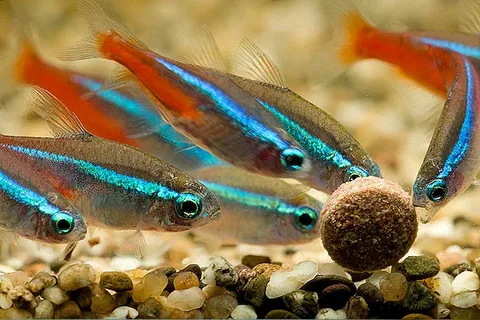
Breeding Neon Tetras: A Delicate Dance
Breeding of Neon Tetras is feasible but difficult. They are egg scatterers and need special conditions to stimulate spawning
Breeding Tips
Separate breeding tank with soft, acidic water (pH 5.0–6.5)
Low lighting or subdued light
Temperature around 75°F (24°C)
Introduce a conditioned male and female pair at night
Successful breeding will leave the female depositing 50–130 eggs, which are fertilized by the male. Take out the adults right away, or they will eat the eggs. The eggs will hatch in 24–36 hours. The fry are small and require infusoria or commercial fry food.
Raising the fry is another ordeal—but one that’s worth it to serious hobbyists.
Health and Longevity: Keeping That Glow Alive
Common Health Issues
Neon Tetra Disease (NTD): A parasitic disease that causes color fading, odd swimming, and muscle wasting. Unfortunately, it’s incurable.
False NTD: Caused by stress or poor water quality. Treatable if caught early.
Ich (white spot disease): Common but treatable with medication and increased water temperature.
Preventive Care
Quarantine new fish
Maintain stable water parameters
Regular water changes (25% weekly)
Avoid overfeeding
Final Thoughts: Small Fish, Big Legacy
Neon tetras are more than mere eye candy. They’re a living testimony to the fact that beauty needn’t be packaged in bulk. Their radiance, their elegance, and their schooling behavior are a visual melodic orchestra that no man-made ornament could ever hope to reproduce.
To the beginner, they’re tolerant and entertaining. To the master, they’re a painter’s palette waiting for aquascaping. And to all, they’re merely a delight to behold.
So the next time you spot that flash of electric blue and crimson red flying through a tank, take a moment to marvel at what you’re seeing. It’s not merely a fish. It’s a living spark—tiny in stature, massive in radiance.
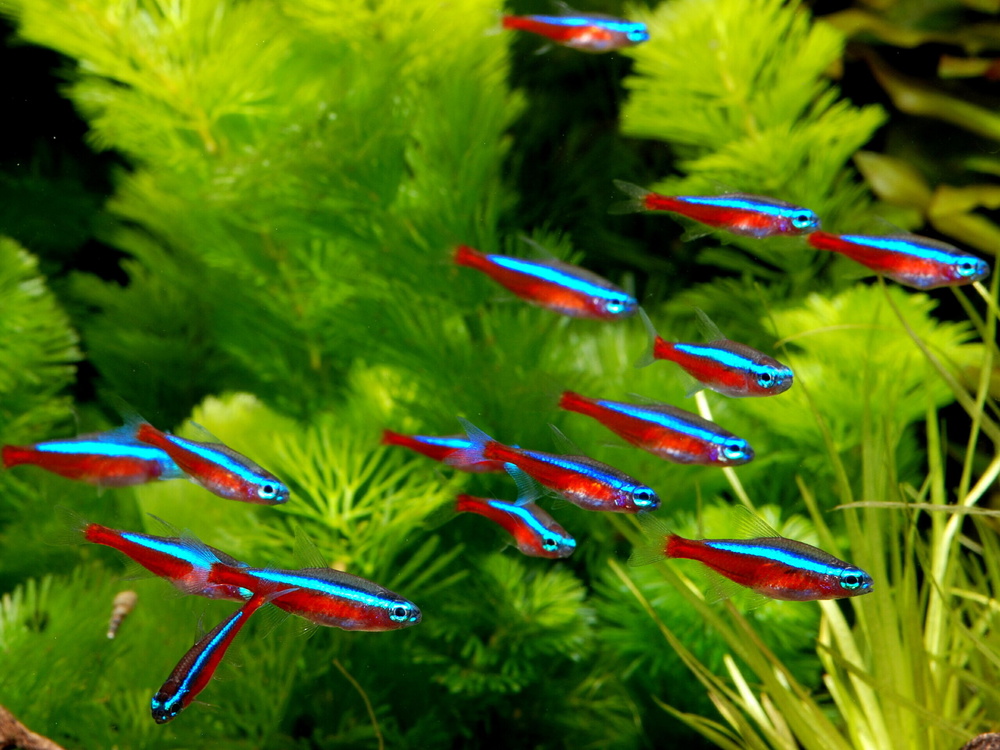
Conclusion
In a noisy, complicated world, there is something close to meditative in observing a school of neon tetras dart through the water, smooth, in sync, shimmering with life. These minuscule fish, barely the width of a paperclip, possess an elegance and vigour that few animals of their size can muster. From the yellowed streams of the Amazon to our home tanks and office water bowls, Neon Tetras have travelled a route few freshwater species can boast.
Ultimately, Neon Tetras teach us that in the tiniest of spaces and in the quietest of animals, we find the most brilliant surprises. They are not just fish—they are poetry, embers of life burning behind glass. So if your aquarium is a bit too quiet, a bit too bland, perhaps it’s time to introduce some spark. Perhaps it’s time… for the Neon Tetra.
FAQs
How many neon tetras should I keep together?
Neon Tetras are schooling fish and need to be in a school to be comfortable and swim naturally. At least 6, but you can attempt 10 or more. A big school reduces stress and enhances their natural swimming patterns.
Can neon tetras live with betta fish?
It will be determined by the personality of the Betta. Some bettas are calm and can get along with tetras, while others will view them as rivals and attack them. If you attempt this combination, keep a close eye on them and provide the tank with many hiding places.
How long do neon tetras live?
Under proper care, Neon Tetras live between 5 to 8 years, although most live about 3 to 5 years in a normal home aquarium. Proper diet, clean water, and stress-free conditions maximise their lifespan.
Why do my neon tetras look pale sometimes?
Neon tetras gradually lose color as they rest or are under stress. Even quick lighting changes, water, or bullying of other tank members might turn them pale. However, if they lose their color consistently, perform water tests and check for diseases.
